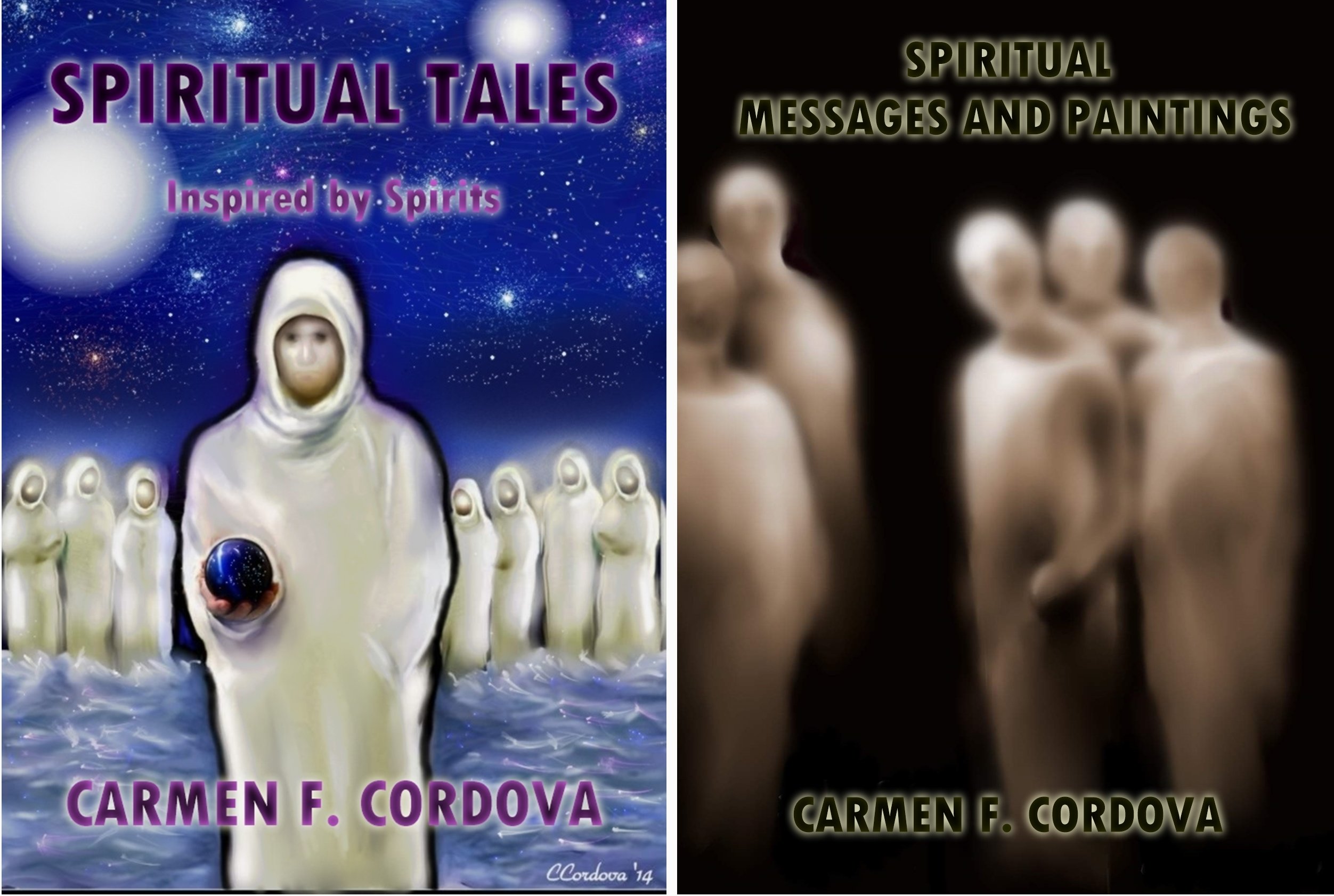Traditional African Religions
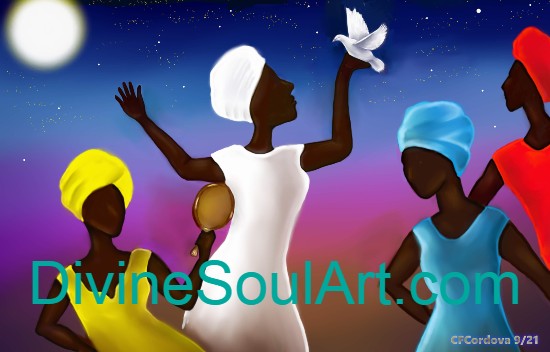 Traditional African Religions
Traditional African ReligionsTraditional African Religions
Macumba, Candomblé, Santeria, and more
.Traditional African religions encompass various spiritual practices and beliefs of the Yoruba people in southwestern Nigeria. While the Yoruba religion is one, several subgroups or subreligions, such as Santería, Macumba, and Candomblé, have emerged.
Indigenous African beliefs often reflect on the origins of orishas-Yoruba pantheon- indicating that these divine entities existed before the creation of the physical realm and humans. The orishas are connected to their supreme creator, emphasizing their role in assisting humanity and managing procreation, which underscores their significance from the time of creation. These spiritual systems are deeply rooted in the Yoruba culture and history of African communities, offering a rich tapestry of rituals, myths, and deities.
Additionally, Yoruba religion is a diverse group of spiritual practices that have been shaped by Africa continent’s rich cultural heritage. This religion is characterized by a strong connection to nature, a belief in a supreme creator, and a reverence for ancestors and deities. In West Africa, Yoruba Orisha religion has played a significant role in shaping the spiritual practices of the region. The Yoruba people of Nigeria, Benin, and Togo have a rich tradition of worshiping deities known as Orishas, who are believed to possess supernatural powers and influence various aspects of human life.
Traditional African Religions
Exploring Yoruba's History, Beliefs, and Practices
Traditional African religion has a long and complex history that spans thousands of years. The Yoruba Orisha religion has its roots in ancient Nigeria and has evolved over time through the influence of various cultures and traditions. The religion is based on a belief in a supreme creator known as Olodumare, who is believed to have created the world and all living things. The Orishas are believed to be spirits sent by Olodumare to assist humanity and teach them how to live in harmony with nature. The religion is characterized by a strong emphasis on rituals and practices, such as the use of cowrie shells, which are believed to possess spiritual divine power.
Have you ever wondered about the rich tapestry of African traditional religion that thrive in the Americas?
From the entrancing rhythms of Candomblé ceremonies to the powerful orishas of Santería, these spiritual customs have evolved and adapted through centuries of cultural exchange, creating a fascinating mosaic of beliefs and rituals.
Join me on this journey as we explore the history, beliefs, and practices of African-inspired religions that have shaped the spiritual landscape of Latin America and beyond.
African Roots in the New World
The vibrant spiritual traditions of African-inspired religions have deep roots in Latin America, with their African origin tracing back to West Africa, where indigenous religious beliefs and rituals thrived.
According to African history, during the transatlantic slave trade, enslaved Africans were forcibly brought to the New World. Although they were stripped of everything, they managed to carried with them their rich spiritual heritage, which eventually blended with indigenous and Catholic beliefs to create a unique and powerful practice that persist today.
These practices, which are often referred to as Afro-Caribbean or Afro-Brazilian religions, are influenced by Yoruba religion and share many common elements.
Traditional African Spirituality
Traditional African spirituality is a rich and intricate system of beliefs and practices that encompass the spiritual world, communication with spirits, a Supreme Being or creator, orishas, ancestral spirits, rituals, initiation, and much more.
These beliefs and practices have been part of an oral tradition passed down from generation to generation.
.These African traditions continue to thrive in today's world.
Syncretism with Catholicism
The integration of African religious rituals with Roman Catholicism gave rise to syncretic religions like Santería and Vodou, both of which draw elements from these traditions, including the veneration of Catholic saints.
In Santeria, Chango is syncretized with catholic Santa Barbara, Yemaya with Our lady of Regla, Elegua with Holy Infant of Atocha, and Oshun with Our Lady of Charity/La Caridad del Cobre, just to mention a few.
Click here to view Santeria Orishas and Catholic Saints
When enslaved Africans came to the New World, they brought with them their religious beliefs.
Although the African slaves were not openly allowed to worship and practice their religion, they secretly continued to do so.
They disguised their saints (orishas) with saints from the Roman Catholic church to avoid being severely punished.
The selection was determined by the orishas and Catholic saints' similar characteristics.
For example, Chango, in santeria, was represented by Saint Barbara. Their colors are red and white; she holds a sword, and he carries a double-edged ax; she holds a goblet in her right hand, and he has a mortar, and she is linked to thunder and lightning, and he is affiliated with fire, thunder, and lightning
.
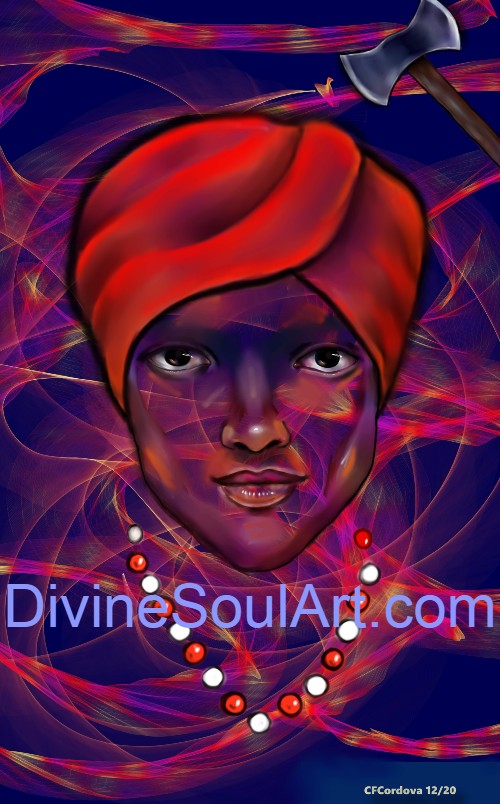 Traditional African Religions
Traditional African ReligionsSantería
The Way of the Saints
"Santería is an Afro-Caribbean religion that originated from the traditional religions brought to Cuba by enslaved West Africans, mostly Yoruba, between the 16th and 19th centuries." ( wikipedia.org )
Santeria is a traditional African religion that combines Yoruba spirit worship with Catholicism, fostering a unique mix of beliefs and practices that have been disseminated throughout the Americas.
Santería practitioners, known as santeros or santeras, seek the guidance and protection of spirits called orishas, who serve as intermediaries between human beings and the divine.
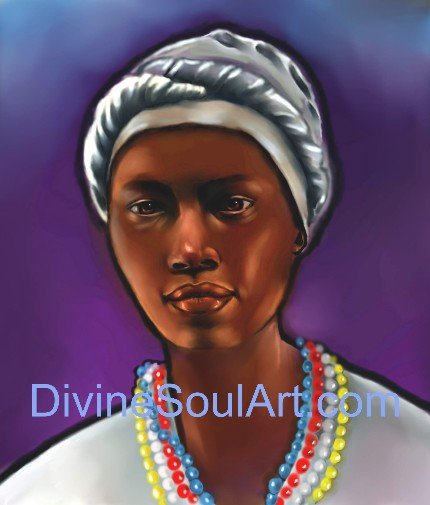 Santera
SanteraOrishas Worship
In Santería, an orisha religion, orishas (deities) are revered spirits that serve as messengers of Olodumare, the Supreme Being or Supreme God, and are responsible for controlling the forces of nature and human actions.
Several orishas are typically venerated in Santería, each with its unique attributes and functions.
Worship of these orishas involves rituals such as animal sacrifice, offerings of food and drink, and chanting. One popular offering is palm oil also used in many rituals.
These ceremonies allow the practitioner to maintain a powerful connection with their orishas and the spirit world, as they seek their wisdom and blessings in all everyday life areas.
What are the Names of some of the Orishas and what do they represent?
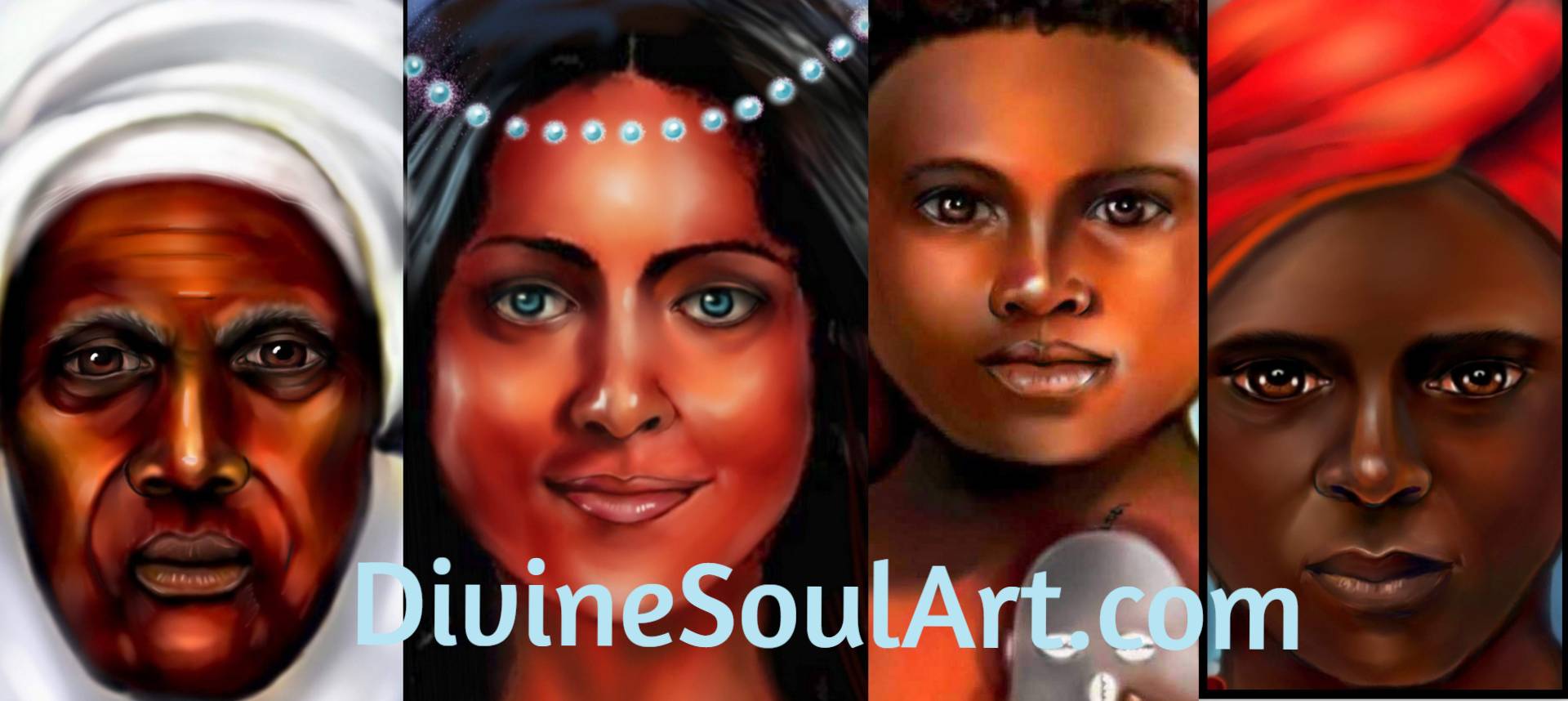 Traditional African religions-The Orishas
Traditional African religions-The OrishasObatala-Obatala is the oldest of all orishas.
Yemaya-Goddess of the Ocean.
Elegua-Ruler of all crossroads.
Shango-Affiliated with fire, thunder, and lightning.
Oshun- Associated with river waters, love, fertility,
These are just a few.
Go to Orishas and read more.
Macumba-Afro Brazilian Religion

Macumba is a religion with roots in Afro-Brazilian culture. It draws from African religious traditions, Brazilian Spiritualism, and Roman Catholicism. While some may mistakenly view Macumba as witchcraft or black magic, it is incorrect to label it as an inherently evil religion.
If that is the case, do we condemn the Catholics for the wrongdoings that occurred during the Inquisition where approximately 32,000 human beings were tortured and executed. Of course not. It would be unfair to condemn Catholics for the madness of individuals connected to the Catholic Church.
The same occurs in Macumba or any other religion where certain individuals decide to do evil rather than good. Whether a person choose to do evil in any religion, it does not reflect the religion as a whole. It is crucial to understand and respect its cultural significance.
During the Atlantic Slave trade millions of Africans were enslaved and shipped to Brazil. Although the treatment they received in slavery was extremely cruel and dehumanizing, slave owners and those in the business of capturing and selling Africans were not able to destroy the Africans' faith in their GODS. Thy continued to worship and practice.
Even though the slave owners compelled slaves to adopt Christianity, they still practiced their own beliefs in secret. They disguised their orishas as Catholic saints to safeguard their traditional beliefs and prevent harsh punishment.
African elements in Macumba rituals include outdoor ceremonies, animal sacrifice, spirit offerings-such as candles, rum, cigars, flowers etc., and ceremonial dancing. Additionally, in these rituals, mediums calls on the spirits to embody them and communicate with those in attendance.
It is believed that Macumba is the leading force for Candomble and Umbanda (Afro Brazilian religions). While Candomble will be briefly mentioned here, you can find more information about Umbanda by clicking the links at the bottom of the page.
Candomblé: Afro-Brazilian Spirituality
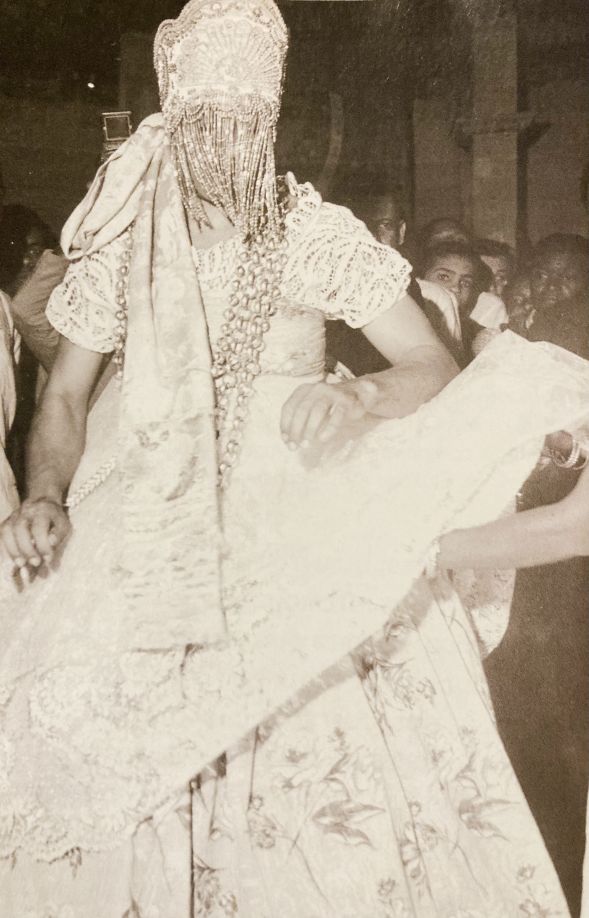 Candomble practitioner
Candomble practitionerCandomblé, an Afro-Brazilian religion with origins in 19th-century Bahia, is known for its captivating rituals, dances, and honoring of the gods. With no written sacred texts,
Candomblé is made up of various nations, such as Ketu and Angola, each with its unique beliefs and practices.
Candomble has significantly impacted Brazilian culture by shaping numerous other spiritual practices and traditions.
According to learn religion website "Because of its association with pagan practices and slave revolts, Candomblé was outlawed, and practitioners were persecuted by the Roman Catholic church. It wasn't until the 1970s that Candomblé was legalized, and public worship was allowed in Brazil."
Candomble is based on the belief in Oludumare, the Supreme Creator, who is served by a group of powerful but lesser gods and goddesses known as orixas.
Although there are many orixas, Candomble usually deals with only sixteen.
The orixás are honored through rituals that involve offerings, dancing, and drumming to invoke their presence and guidance.
These rituals enable Candomblé practitioners to sustain a profound connection with their deities, as they rely on their wisdom and support in daily life.
Practitioners of Candomblé often fall into trances during ritual ceremonies, transforming into the orixás they worship.
The orishas provide a link between our world and the spirit world. They possess unique personalities, likes, dislikes, and days of the week.
The religion is also syncretic, meaning several orixas are associated with Catholic saints and have adopted many Catholic customs. Like Macumba, Candomble includes various ceremonies where singing, dancing, animal sacrifice, offerings, and spirit trance occur.
In Candomblé rituals, animal sacrifice plays a vital role and is often misunderstood due to cultural and racial prejudices.
Another interesting piece of information discovered is that practitioners of Candomblé believe in life after death, but their focus is not solely on the afterlife. They believe in the existence of "axe" or "ache, " a life force in nature. The accumulation of ache is of utmost importance to believers. When they die, they are buried in the earth instead of cremated so that their axe can benefit all living things.
Candomblé practitioners in Brazil have historically faced discrimination, persecution, and societal misconceptions. Recent movements have aimed for recognition and acceptance, highlighting the spiritual practices and cultural significance of the religion.
Vodou: Haitian Spiritual Tradition
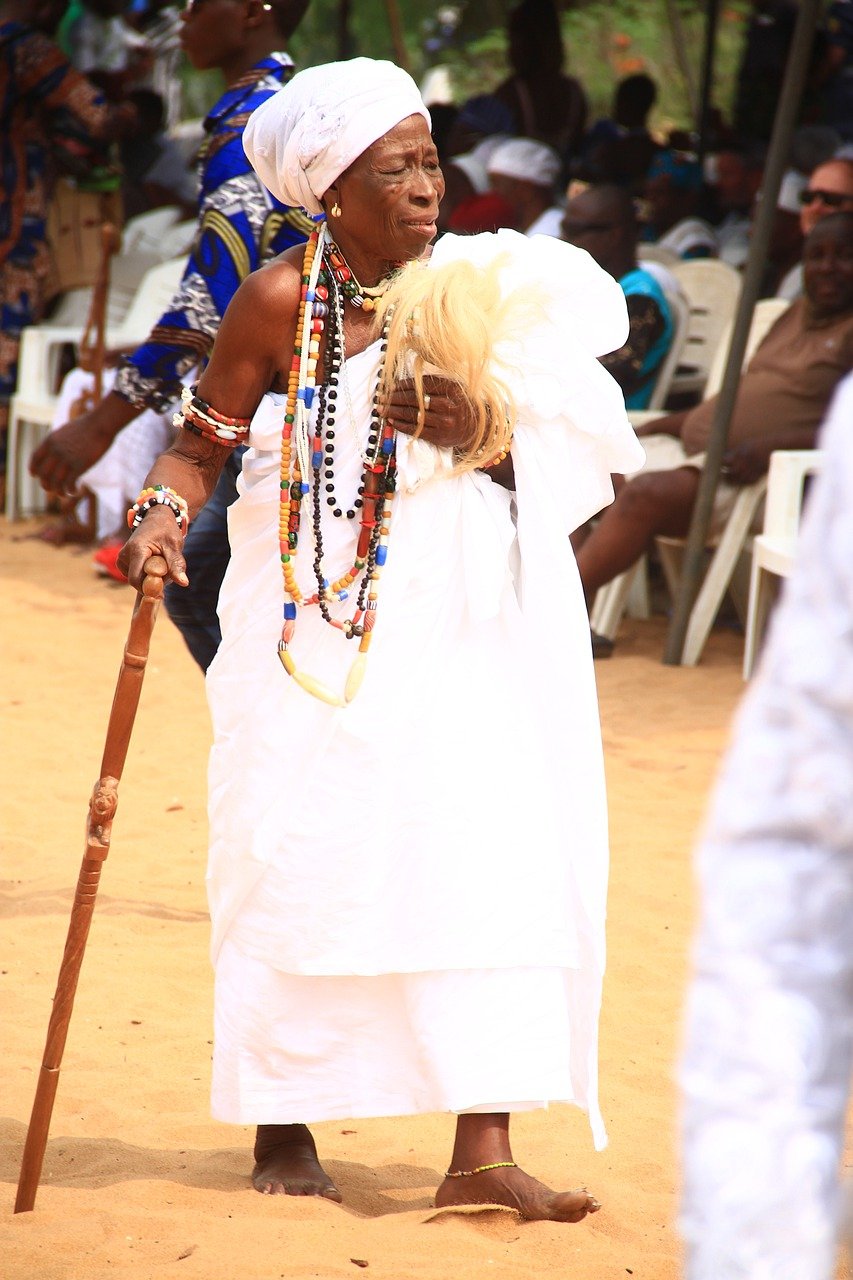 voodoo practitioner
voodoo practitionerVodou, a Haitian religion, blends African religious practices with Roman Catholicism, creating a distinct spiritual tradition that has captivated practitioners and observers alike.
With its roots in Haiti, Vodou has spread to other parts of the world, including:
- Cuba
- Brazil
- the United States
- and beyond.
Vodou practitioners, known as Vodouists, seek harmony with the spirits that influence their well-being, serving as intermediaries between humans and the ultimate creator, Bondye.
In Vodou, spirits are called lwa. They are central to the religion’s beliefs and practices. Vodou ceremonies involve:
- Offerings
- Dancing
- Drumming
- Spirit possession
These practices are used to communicate with and honor the lwa, who serve as intermediaries between humans and Bondye.
These rituals help Vodou practitioners maintain a potent bond with their lwa, as they seek their wisdom and blessings to find balance in their lives.
Umbanda: Brazilian Spiritual Religion
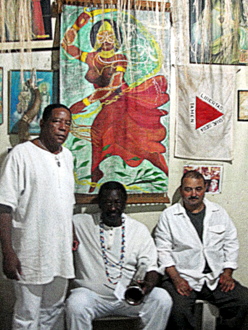
Umbanda is a Brazilian syncretic religion that combines elements of:
- Spiritism
- Afro-Brazilian religions
- Roman Catholicism
- Hinduism
- Buddhism
- New Age practices
The Umbanda religion is a unique blend of various teachings and practices, making it a fascinating aspect of Brazil’s diverse spiritual landscape.
Founded in Rio de Janeiro in the 1920s by Zélio Fernandino de Moraes, Umbanda has evolved as a unique spiritual path that embraces a diverse array of beliefs and customs.
With a focus on spirits and mediumship, Umbanda offers a fascinating glimpse into the complex tapestry of Brazilian spirituality.
Click here to read about Umbanda Ceremonies
During ceremonies, Umbanda practitioners always wear clean white clothing, for it represents purity. Shoes are never worn.
They communicate with spirits, such as orixás, preto velhos, and caboclos, through rituals, dancing, chanting, and the use of mediums.
People attend Umbanda ceremonies seeking wisdom, support, healing, and personal growth from the spirits.
The practice of mediumship in Umbanda religion is often the result of a personal crisis, such as physical illness or emotional distress, leading individuals to embrace their role as a conduit for spiritual communication and healing.
The Challenges
African-inspired religions have faced numerous challenges in today’s world, including:
- The impact of Islam and Catholicism
- Shifting populations
- Poverty and corruption
- Westernization
- A lack of recognition and understanding
Despite these hurdles, these religions have:
- remained faithful to their core beliefs
- simultaneously adapted to evolving social and cultural contexts
- guaranteed their pertinence and vibrancy in present-day society.
Summary
From the rhythmic beats of Candomblé ceremonies to the powerful orishas of Santería, the world of inspired African religions offers a rich and diverse tapestry of teachings and practices that have shaped the spiritual landscape of Latin America and beyond.
As these African traditional religions continue to evolve and adapt in our modern world, their enduring legacy serves as a testament to the resilience and vitality of these spiritual traditions.
During the African Diaspora, it was remarkable that the enslaved people managed to keep their West African religious beliefs alive in their hearts, preserving their essence for generations to come.
Although the enslaved people were forced to become African Christians, the enslavers were not successful in erasing their African culture and African history from their souls.
May we all be inspired by their wisdom and strength as we navigate our own spiritual journeys.
Frequently Asked Questions
.What is the meaning of macumba?
Macumba is a religious cult in Brazil that combines beliefs and practices of African origin similar to voodoo, with elements from Roman Catholicism and indigenous religions.
What are some common inspired African religions in the Americas?
Candomblé, Santería, Vodou, Umbanda, and Rastafari are some of the most common inspired African religions in the Americas.
How did inspired traditional African religions originate in the Americas?
African-inspired religions in the Americas have their origins in West African spiritual practices, brought by enslaved Africans and blended with local beliefs.
traditional african religions
Related Articles
Click below and views more than 600 pieces of spiritual artwork

Spiritual Books
If you enjoy the articles on this website, you will also appreciate the short stories in the books below. Click here and continue the journey.
